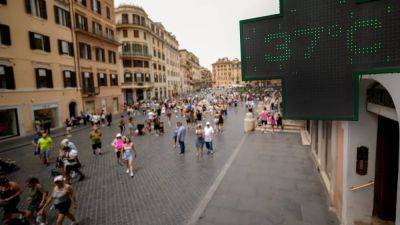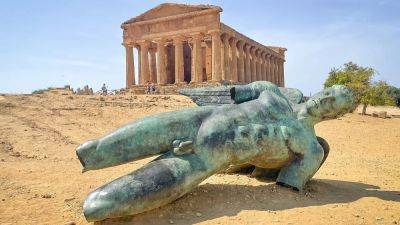Glow up: Southern Italian towns dazzle with these spectacular light displays in summer
In early July, the southern Italian town of Scorrano is transformed into a kaleidoscopic light display.
To celebrate the patron saint Santa Domenica, giant architectural structures studded with lightbulbs known as luminarie are erected.
There are castellated entrance gates, arched tunnels, rose windows and domes decorated in multicoloured lights so the surfaces almost look like stained glass.
Across southern Italy, in the regions of Molise, Puglia, Calabria, Campania, Basilicata and Sicilia, these dazzling constructions appear for saints day festivals and Christmas celebrations.
Earlier this year, Italy’s UNESCO committee announced its decision to propose the temporary light displays as intangible heritage, under the name ‘Parazioni and traditional light displays of Southern Italy’.
The art of luminarie began as far back as the 17th century with decorations erected for village festivals and celebrations.
The word derives from the phrase ‘lumen in aria’ meaning lights suspended in the air. Initially, these were oil lamps or candles wrapped in coloured paper strung up on ropes.
Soon, local artisans began to create bigger structures from poles and arches.
Later, they began to draw inspiration from the sketches of the great masters of the Italian Renaissance and Baroque to create ‘parazioni’ or ‘parature’, which were carved in wood and hung with oil lamps.
Their shapes were varied - from arches to rosettes to portals - and they managed to reproduce entire architectural structures that served as theatrical backdrops for popular dances, religious parades and local fairs.
In the 20th century, the oil lamps were replaced by electricity and incandescent light bulbs.
Over time, the artisan techniques have changed. Now, structures up








